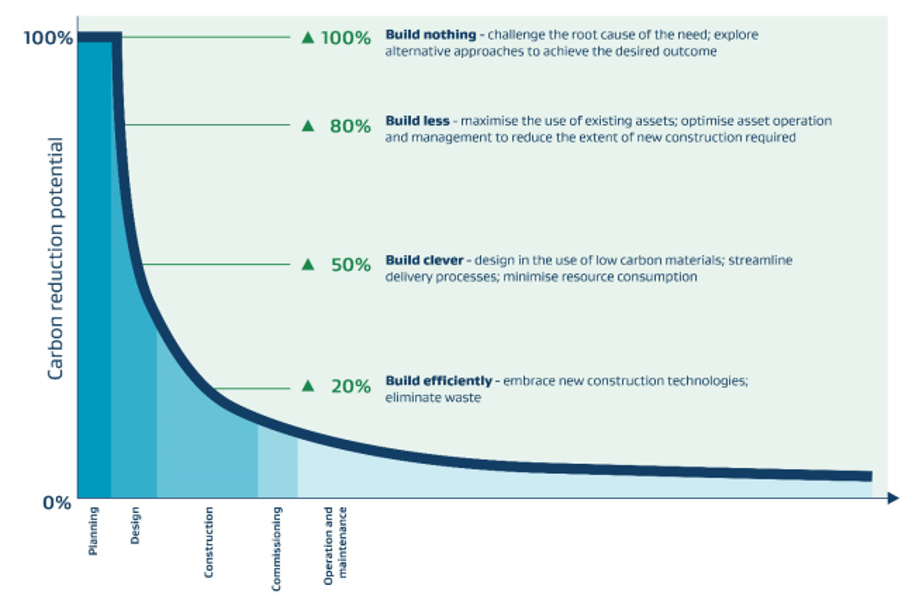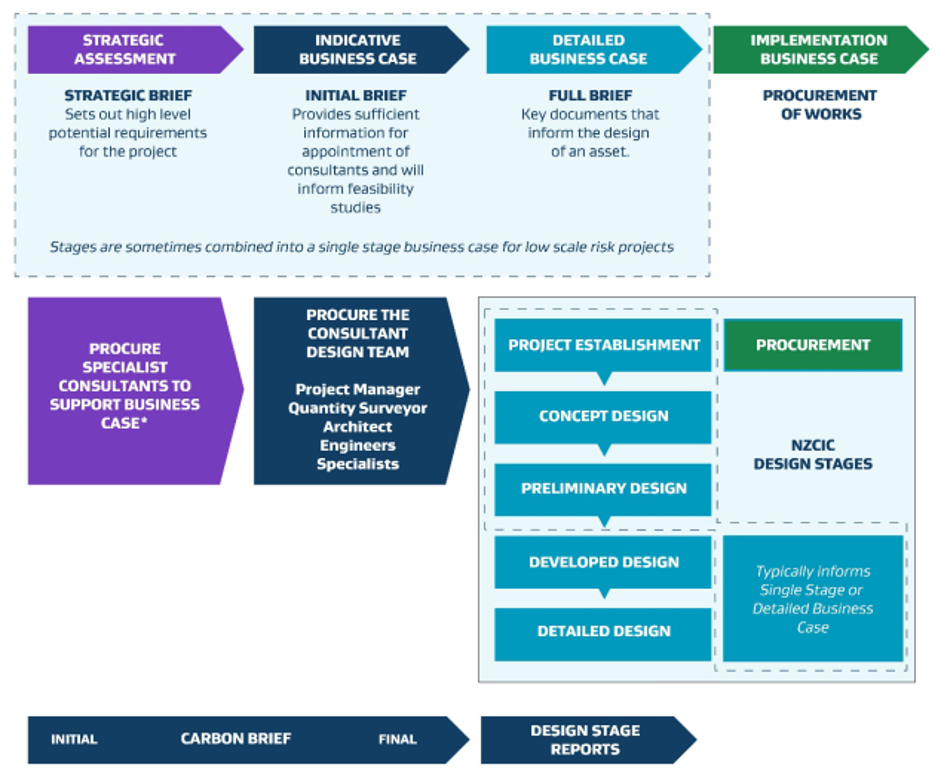New Zealand has committed to net-zero carbon emissions by 2050. The Building and Construction Sector needs to play its part in meeting this goal as the sector currently accounts for around 20% of New Zealand’s carbon emissions, through the energy and materials used in buildings
New Zealand has committed to net-zero carbon emissions by 2050. The Building and Construction Sector needs to play its part in meeting this goal as the sector currently accounts for around 20% of New Zealand’s carbon emissions, through the energy and materials used in buildings. The Government is developing an Emissions Reduction Plan, which will set out the changes needed to allow New Zealand to meet its climate change goals1.
The Building for Climate Change Programme (MBIE) has been set up to drive transformational change in the sector to meet the challenges posed by climate change, and to meet our targets to be a net zero emissions nation by 20502. The programme is focused around two frameworks that will work together to:
- Improve the operational efficiency of buildings which will reduce energy and water use and improve ventilation and indoor environmental qualities of buildings. Improved efficiency will lead to lower operational emissions, also known as operational carbon, from buildings.
- Reduce the whole of life embodied carbon of buildings which includes greenhouse gas emissions generated from:
- production of construction materials
- construction process
- construction waste disposal and
- disposal at the end of a building’s life

Source: C40 Knowledge Hub
Currently, the Building and Construction Sector in New Zealand has a relatively immature understanding of the embodied carbon impacts of its activities, and there is no regulation or incentives requiring it to be considered.
However, there is a growing interest in reducing embodied emissions of buildings, both inNew Zealand and around the world. This has been driven by an increasing scrutiny on carbon emissions from building materials and products, not just the operation of buildings, and the realisation that when buildings are operated more efficiently, the relative significance of embodied emissions from buildings increases.
To achieve the vision set out above, whole-of-life embodied carbon considerations will become mandatory for buildings in New Zealand, in order to deliver the carbon emissions reductions we need to achieve.
Public sector clients are taking the lead in demonstrating how whole-of-life embodied carbon for a building will be calculated, reported, managed and reduced. The experience in the sector (clients and consultants) is growing and available to innovative clients in other sectors of the economy, wishing to make sustainable choices.
Why should your organisation get involved?
The environmental reasons for addressing carbon are well documented. Some of the most compelling reasons include:
- Embodied carbon can form a key part of any corporate climate change strategy
- Addressing embodied carbon offers an attractive, one-time opportunity to make a significant saving in a shorter period of time, whereas operational carbon savings unfold over a longer period of time
- Consideration of embodied carbon at design stage can facilitate greater resource efficiency.
The reputational reasons are becoming more obvious. Organisations are seeking to better understand and manage “what matters most” to their stakeholders. An initial embodied carbon assessment can be commissioned using a high-level approach. As clients carry out more projects, they can build on their embodied carbon knowledge and ask for more information to a greater level of detail. Similarly, investor rating and measurement indices are starting to include assessment of embodied carbon3. There are a number of international examples:
- The Dow Jones Sustainability Index (DJSI) now includes a section about the life cycle assessment of building materials
- The FTSE4Good Index asks questions on lifecycle studies and related carbon emissions reductions
- The CDP (formerly the Carbon Disclosure Project) includes voluntary reporting of Scope 3emissions
- The GRESB (Global Real Estate Sustainability Benchmark) survey has a significant volume of questions on new construction and major innovations.
The relationship between whole of life embodied carbon and operational carbon over time
The focus on reducing the environmental impact of buildings has been mainly focused on increasing operational efficiency. However, there is a growing interest in reducing whole of life embodied carbon, both in New Zealand and globally. This is due to the increasing scrutiny of the carbon emissions generated from the manufacture of building materials and products, not just the operation of buildings, and the realisation that over time new buildings will become more efficient in use through improved design and technology, thereby increasing the significance of whole of life embodied carbon
Reducing whole of life embodied carbon and operational carbon
The greatest opportunities to reduce whole of life embodied carbon and operational carbon are at the planning and design phases of a project. This occurs through key design decisions made on the systems and materials to be used in the building’s construction. It will include embodied carbon generated through life cycle replacement of materials like windows or doors, as well as the disposal of a building at the end of its life (e.g. demolition). The opportunity to significantly reduce embodied carbon will be influenced by the choices made during the initial design stages. Whole of life carbon emissions can be reasonably predicted independently of the intended use of the building.

Developing a Carbon Brief
A Carbon Brief describes how you will develop an effective approach to reducing whole of life embodied carbon and operational carbon through planning and design. It is a part of the Project Brief and should be approved by the client and overseen by a senior executive from the client organisation to ensure commitment from the top.
When to prepare a Carbon Brief
The best time to start is at the beginning phase of initiating a project, to set clear objectives so that the project team can respond accordingly with appropriate solutions, from developing the business case through to the development of design responses. The figure below is an illustrative model of how the Carbon Brief might relate to the various stages of the business case and design stages for a typical project.

Specialist expertise may be needed
Determine who in the design consultant team will have the lead responsibility for modelling, assessing and reporting on carbon throughout the planning and design phase. Make sure they have appropriate accountability to be involved in key design decisions so that carbon reporting drives early decision making rather than becoming an auditing tool.
Thinking about carbon should be a priority for everyone involved in the building and the construction sector. Make sure that any specialist expertise is an integral part of the design team rather than an add-on and make improving the project team’s carbon literacy a key aspect of the relevant consultant service requirements.
If you would like further Decarbonising advice please get in touch
- Gareth Williams
e. gareth.williams@gwe.co.nz
p. 021985892 - Colin Cranfield
e. colin.cranfield@gwe.co.nz
p. 021776393
References
MBIE, Whole-of-Life Embodied Carbon Emissions Reduction Framework, Building for Climate Change Programme, August 2020
MBIE, Procurement Guide to Reducing Carbon Emissions in Building and Construction, A Practical Guide, June 2021
UK Green Building Council, Embodied Carbon: Developing a Client Brief, March 2017
The C40 Knowledge Hub